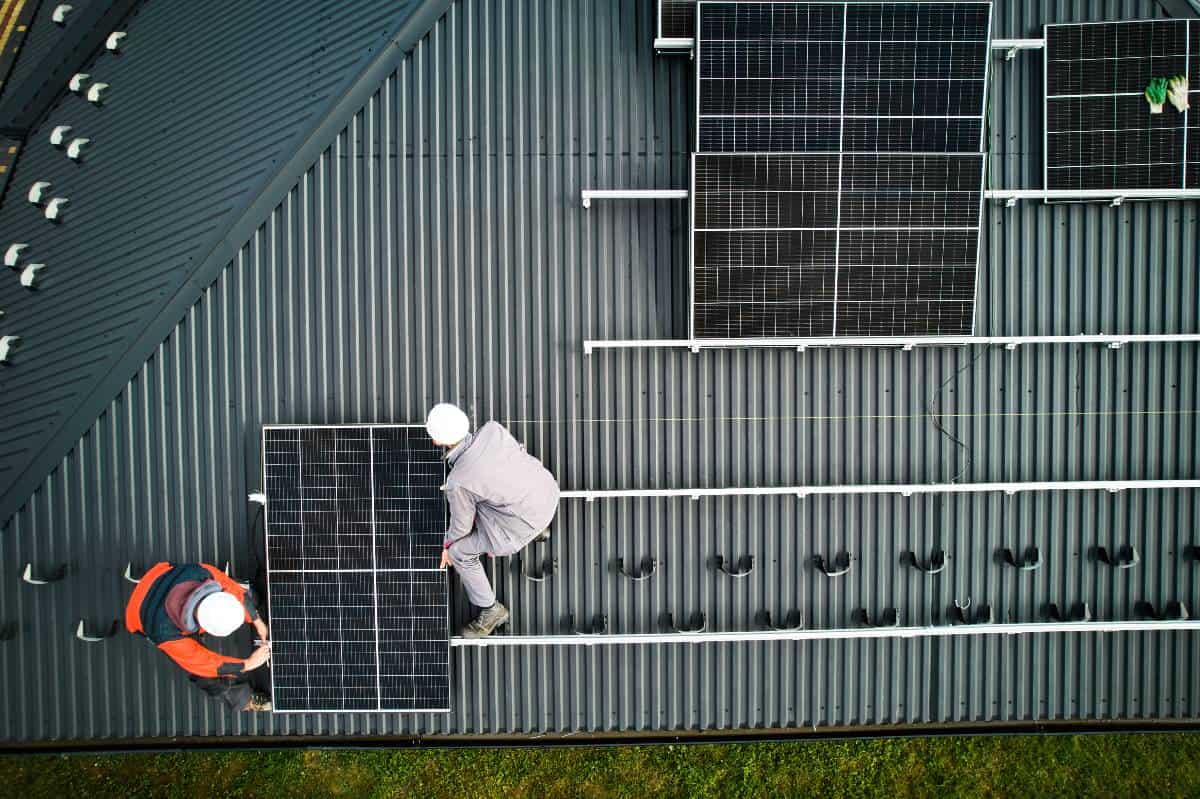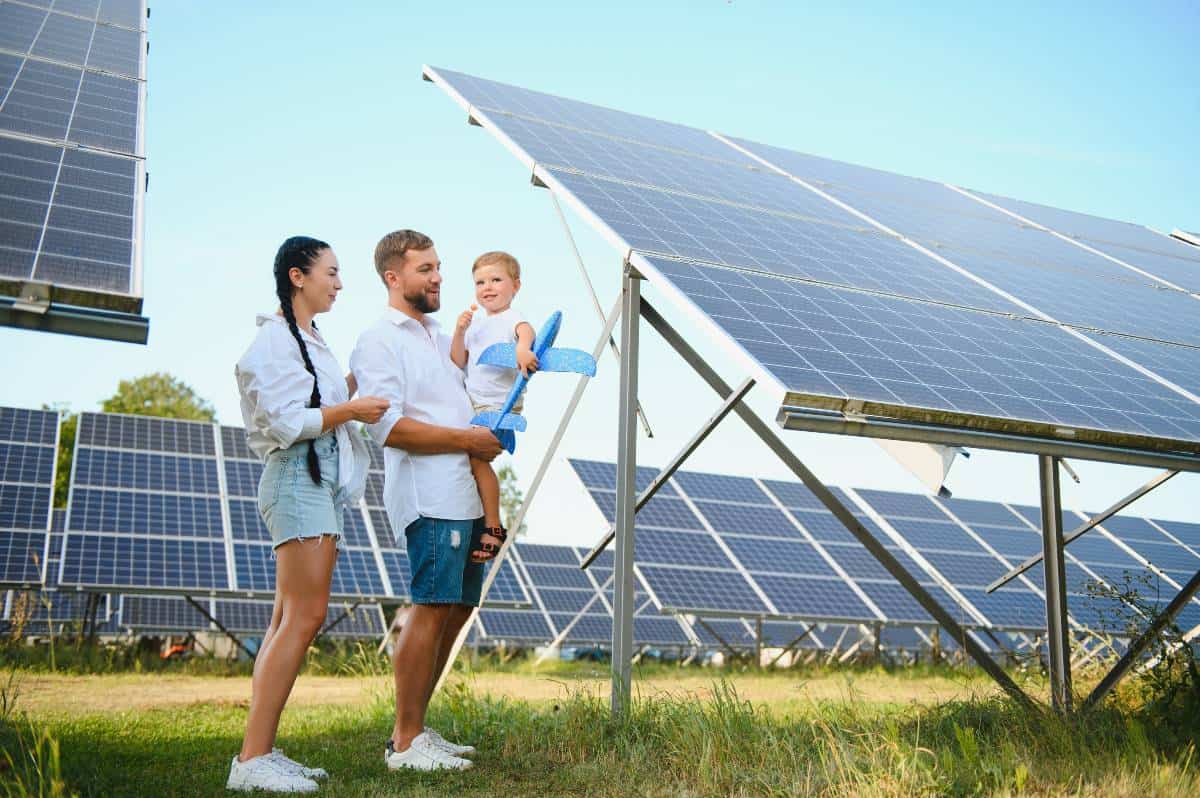The Future of Solar Panels [2024]
As the founder of Electrik Living, my central focus is empowering the wider use of renewable energy and electric transport to reduce our carbon footprint. And if we truly want to win the fight against climate change, solar power represents one of our most potent weapons for displacing fossil fuels. From individual homeowners adding rooftop solar panels to massive utility-scale solar farms sprouting up worldwide, solar technology is expanding rapidly.
Key Takeaways
- Solar power offers enormous potential as a sustainable energy source, with solar technology innovations driving improved efficiency and affordability.
- Emerging solar solutions like perovskite cells (solar cells) and AI-enabled energy systems promise to accelerate adoption, while storage advances make solar more viable.
- Declining solar costs combined with supportive policies are enabling widescale global growth of the solar industry and solar.
The Bright Future of Solar Power
So what factors are driving growth, and what innovations will shape the future of solar energy? Let’s look at the current state of solar, emerging advancements to watch, and the tremendous potential impact of solar on global electricity production.
Harnessing the Sun’s Raw Potential
Solar panels may seem ubiquitous now, but we’re still barely tapping into the sheer magnitude of the sun’s energy. The amount of solar radiation reaching Earth in just one hour contains more energy than the entire planet consumes over an entire year!
- Silicon-based photovoltaic (solar PV) cells have shown tremendous improvements, now able to convert over 20% of sunlight into useful energy with today’s commercial models.
- With global solar capacity hitting over 1,000 gigawatts last year, energy from the sun is no longer an abstract concept but a solid industry projected to boom.
Overcoming Early Solar Challenges
Yet historically, cost and efficiency challenges prevented solar from becoming a major player to generate electricity. However, sustained innovations and manufacturing improvements have dramatically reduced solar pricing, with average global installed costs dropping almost 90% over the past decade!
Simultaneously, research by pioneers like Professor Michael Graetzel into materials like perovskites promises to push solar efficiencies ever higher. And alternative solar thermal technologies use the sun’s heat rather than light, providing sustainable options like concentrated solar plants.
So in terms of technological capability, solar is primed to leave old critiques behind and deliver robust clean energy thanks to enhanced:
- Efficiency of conversions from photons to electrons
- Declining production and installation expenses
- Supporting hardware like tracking and batteries
These factors make it a pivotal time for solar, elevating it from fringe interest into serious contention with fossil fuels.
Accelerating Towards Energy Abundance
Solar may represent under 4% of current total global electricity generation, but estimates predict it could supply over 40% of worldwide energy demands by mid-century!
Driving this monumental growth is the potential for solar innovations to complement and connect with each other, compounding advantages:
Maximizing Existing Strengths
Incremental refinements in familiar silicon PV cells through more advanced materials and manufacturing processes will progressively raise their degrees of efficiency and longevity.
Adding inexpensive perovskite solar layers on top converts more of the light spectrum, achieving higher yields without replacing silicon entirely. This “tandem cell” approach blends advantages of each technology.
Smoothing Solar’s Rough Edges
Surplus solar peaks midday but lulls overnight, aligning poorly with energy demand spikes in early evenings. Thus batteries bridging supply gaps remain pivotal for solar + energy storage systems seen as the likely backbone enabling widespread adoption.
Luckily, parallels between declining solar expenses and battery storage costs keep the vision of affordable 24/7 renewable power viable. Projections show solar paired with batteries could become the least expensive form of energy in most countries during the 2030s.
Cutting-Edge Concepts
Maverick ideas like floating solar arrays atop bodies of water or deploying swarms of solar-gathering drones paint a picture of flexible abundance rather than rigid scarcity.
Even routing the emissions-free power harvested through an atmosphere-blanketing shell of satellites or macro arrays in space could overcome nighttime/weather intermittency while bathing our world in endless carbon-neutral energy!

Solar Supporting Sustainable Growth
Beyond avoiding fossil fuels’ pollution, a booming solar segment and associated battery/electronics value chains may form robust job-creating industries supporting equitable, sustainable GDP growth.
With coal and even natural gas plants facing cancellations and stranded asset risk, solar could displace not just dirtier energy sources but also trades reliant on ecologically damaging practices.
Climate Solution Multiplier
In fact, the positive feedback loops fromtransitioning to solar extend deeply into environmental and social realms.
Making clean power affordable decentralizes generation so poorer rural villages denied grid connectivity gain access to lighting, refrigeration, and connectivity. Small Island nations balance generation resilience against extreme weather with reduced import costs. Effective pairing with agricultural photovoltaic plots raises food production while better water pumping or crop drying bolsters local nutrition levels.
Investment Magnet
These compounding upsides explain big money flowing into everything solar related, from Fortune 500 firms contracting for gigawatt-scale installations and project developers or panel manufacturers to innovative startups perfecting solar films or seeking battery breakthroughs.
Goldman Sachs even deemed the transition towards renewable energy as the largest asset class ever with Solar the likely category leader!
Overcoming Economic Hurdles
Solar’s split identity as both rapidly growing industry and planet-saving panacea sets impossibly high hopes that can leave supporters perplexed when adoption faces mundane fiscal hurdles.
Why won’t struggling households immediately install affordable rooftop systems? Shouldn’t enlightened corporations be eagerly offsetting their entire carbon footprint with solar by now?
The reality remains more complex with upfront capital costs and financing barriers slowing solar’s ascent, especially in developing regions. Progress incentivizing distributed solar connections relies partly on smart policy fine-tuning deployment incentives while bridging infrastructure gaps.
Global Solar Domination Within Reach
Fantastical scenarios envisioning cheap portable solar fabrics woven into backpacks and jackets symbolize solar’s falling costs unlocking ubiquitous personal energy. While physio-chemical constraints temper the pace of laboratory efficiency records transitioning into economical products, sustaining price declines could make such dreams practical.
Furthermore, expanding beyond silicon paves routes to recapture solar’s early euphoria yet avoided previous over-optimistic hype cycles. This time the maturing global industry has both motive and means, threading the needle between caution and exuberance with solar dominating renewable leadership.
The pieces align for a vibrant solar-centric energy society liberating us from location-dependent fossil fuel exploitation. We just need determination to navigate obstacles while unlocking subsidies for unaccounted environmental/health externalities.
If political will persists, the rooftops of the future could join fields and deserts blanketed in shimmering solar potential. And pooling resources toward progress places this revolutionary transition within our generation’s grasp!

What Is the Role of Solar Power in Achieving Clean and Sustainable Energy?
Solar power plays a pivotal role in transitioning towards a clean and sustainable energy system. By harnessing solar energy, the reliance on fossil fuels for electricity generation can be significantly reduced, leading to a prominent decrease in greenhouse gas emissions and environmental pollution.
Furthermore, the integration of solar energy in national energy grids offers a decentralized approach to power generation, promoting energy security and resilience. The proliferation of rooftop solar and utility-scale solar power plants diversifies the energy mix, contributing to a more reliable and sustainable electricity infrastructure.
Looking ahead, the widescale adoption of solar energy promises a long-term environmental impact by mitigating climate change, improving air quality, and fostering a regenerative energy ecosystem for future generations.
FAQs
Can solar panels work in cold or cloudy regions?
Yes, though with some loss of productivity depending on weather severity or darkness duration. Using tracker mounts to optimally align panels offsets reductions. Regional solar potential maps illustrate feasible operations across most geographies.
What are tandem solar cells?
Tandem solar cells are a type of solar cell that use multiple layers of different materials to capture a broader spectrum of sunlight and improve the efficiency of solar energy conversion.
What are the latest technologies in solar energy?
Some of the latest technologies in solar energy include advancements in perovskite-based solar cells, as well as the development of more efficient and cost-effective solar panels.
How rapidly is solar energy growing?
Solar energy is a rapidly growing form of renewable energy, with increasing adoption of solar in both residential and commercial settings as the cost of solar continues to decrease.
What is the role of solar energy in the transition to green energy?
Solar energy plays a vital role in the transition to green energy, offering a sustainable and renewable alternative to traditional fossil fuels and contributing to the reduction of carbon emissions.
How are new materials impacting the development of solar technology?
New materials, such as perovskite, are impacting the development of solar technology by enabling the creation of more efficient and cost-effective solar cells, driving the advancement of solar energy.
What organizations are involved in the research and development of solar energy?
Organizations such as the International Energy Agency, the Department of Energy, and various institutes of technology are involved in the research and development of solar energy, driving innovation and technological breakthroughs.
Conclusion
Through Electrik Living, I strive to inform readers about affordable transport and energy choices aligning with sustainable living values. If this article resonates with your goals or you have any other questions on adopting renewable solutions like solar power, schedule a consultation or reach out to our team! I hope the positive potential outlined here for our solar future proves as inspirational to you as it does for me.






